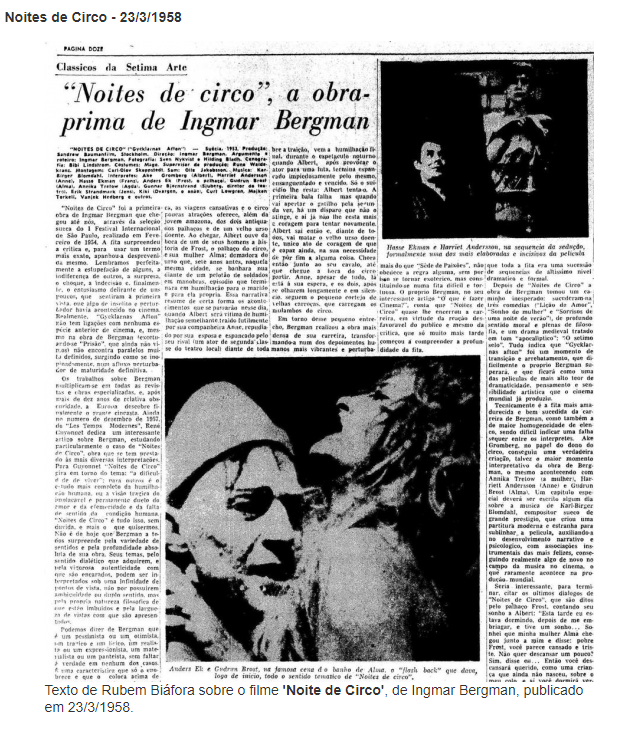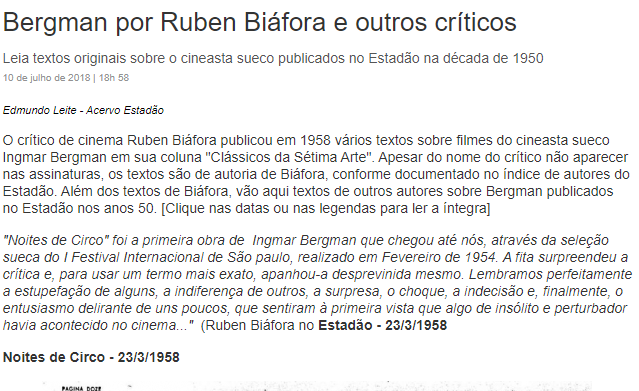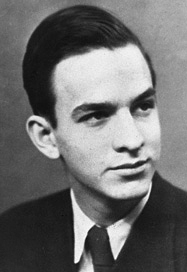22nd June 1958 - During the visit of Princess & Prince Mikasa to Brazil in June 1958, daily 'O Estado de Sao Paulo wrote extensively about Japan's arts...
22nd June 1958 - 'Nascimento do Cinema Japonês' - 'The birth of Japanese Cinema' is a particular good article written by F.L. de A.S.
22nd June 1958 - A view of Japanese literature circa 1958, written by Hiroshi Saito.
14 September 1958 - new Japanese movie releases in São Paulo...
20 May 1956 - Akira Kurosawa's seminal 'Os 7 Samurais' opened at Cine Niteroi an 13 other locations where Japanese immigrants settled with their families like Mogi das Cruzes, Mogi Mirim, Suzano, São Roque, Osasco etc.
7 February 1957 - This article was published at OESP more than a year before the visit of Prince & Princess Mikasa.
22nd June 1958 - A view of Japanese literature circa 1958, written by Hiroshi Saito.
14 September 1958 - new Japanese movie releases in São Paulo...
20 May 1956 - Akira Kurosawa's seminal 'Os 7 Samurais' opened at Cine Niteroi an 13 other locations where Japanese immigrants settled with their families like Mogi das Cruzes, Mogi Mirim, Suzano, São Roque, Osasco etc.
7 February 1957 - This article was published at OESP more than a year before the visit of Prince & Princess Mikasa.
9 October 1960 - Massaki Bobayashi's 'Guerra e humanidade' at Cine República.
15 October 1960 - At Cine Niteroi, Keisuke Kinoshita's 'Hoje como ontem'; at Cine Nippon, 'Flor que não murcha' with Chikague Aushima, Hisaya Norishima & Yoko Tsukasa.
30 October 1960 - Japanese sensation Ichiro Fujiyama in person performs at revue 'Ritmo de Tokyo' at Cine-Teatro Paramount. On the big screen: 'A melhor noiva do mundo' da Toho Films.
15 October 1960 - At Cine Niteroi, Keisuke Kinoshita's 'Hoje como ontem'; at Cine Nippon, 'Flor que não murcha' with Chikague Aushima, Hisaya Norishima & Yoko Tsukasa.
30 October 1960 - Japanese sensation Ichiro Fujiyama in person performs at revue 'Ritmo de Tokyo' at Cine-Teatro Paramount. On the big screen: 'A melhor noiva do mundo' da Toho Films.
27 November 1960 - 'O Noturno 160' at Cine Niteroi & 'Marujo sem porto' no Cine Nippon shot in Okinawa.
4 December 1960 - 'Paixão em Yurakucho' at Cine Niteroi & 'Jovens desencaminhadas' at Nippon.11 December 1960 - 'Rastro de luz' at Cine Niteroi & 'Arco Íris na primavera' with Matiko Kyo & Ayako Wakao at Cine Nippon.

Japanese actors Mitsuko Kusabue & Akira Takarada visit São Paulo during the Toho Films Japanese Film Festival.
30 January 1961 -
Akira Takarada
31st January 1961 - Frigidaire's full-page advertising announcing the presence of Japanese movie stars Mitsuko Kusabue & Akira Takarada who would appear in person in 4 different stores on 4 different days: 30 January 1961 at Futurama on Rua 13 de Maio; 31st January 1961 at Cassio Muniz on Praça da Republica at 4:30 PM; 2 February 1961 at Mesbla on Rua 24 de Maio and 3 February 1961 at Irmãos Sgarzi on Avenida São João, 850.28 January 1958 - Fans wait for the two Japanese movie stars Akira Takarada & Mitsuko Kusabue to arrive at Cine Joia, during the Toho Festival.
'Destino de gueixa' (Yoru no Nagare) - Evening stream (1960); 'Tempestade no Pacifico' (Taiheijo no Arashi) - Storm over the Pacific (1960);
'O segredo do homem elétrico' (Denso Ningen) - Secret of the Telegian (1960); 'Entretanto, eu te matarei' (Otoko tai Otoko).
http://rockandreel.tumblr.com/post/35947065615/early-spring-yasujiro-ozu-1956
'Destino de gueixa' (Yoru no Nagare) - Evening stream (1960); 'Tempestade no Pacifico' (Taiheijo no Arashi) - Storm over the Pacific (1960);
'O segredo do homem elétrico' (Denso Ningen) - Secret of the Telegian (1960); 'Entretanto, eu te matarei' (Otoko tai Otoko).
http://rockandreel.tumblr.com/post/35947065615/early-spring-yasujiro-ozu-1956

















.JPG)



































































